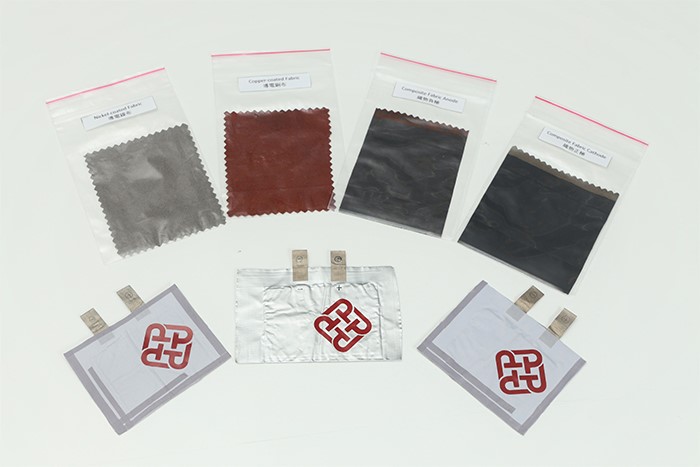By Gina Roos, editor-in-chief
Wearable electronics designers will be interested in a new Textile Lithium Battery from researchers at The Hong Kong Polytechnic University (PolyU). With a novel lithium battery technology, researchers have overcome several roadblocks, including energy density, flexibility, mechanical robustness, and cycling stability, associated with developing a bendable lithium battery.
With high energy density, high flexibility, and high reliability, the new Textile Lithium Battery could be used in applications ranging from smartphones and global positioning system (GPS) tracking to health-care monitoring and intelligent textiles as well as a variety of internet of things (IoT) projects.
Demonstrated specs of the new battery, which is less than 0.5 mm thick, include a high energy density of more than 450 Wh/L, high flexibility with a bending radius of less than 1 mm, and a foldability rating of more than 1,000 cycles with marginal capacity degradation. The technology also delivers a fast charging/discharging capability.

Researchers said that existing bendable lithium batteries can offer a bending radius of only about 25 mm and a much lower energy density of less than 200 Wh/L. Click here for PolyU’s battery comparison specs with other batteries.
The technology, developed by the research team of PolyU’s Institute of Textiles and Clothing (ITC), has earned three prizes at the 47th International Exhibition of Inventions of Geneva held in April 2019 — a Gold Medal and two Special Merit Awards.
“Wearable technology has been named as the next global big market opportunity after smartphones,” said Professor Zheng Zijian, who leads the ITC research team, in a statement.1 “Global market revenues for wearable devices are forecasted to grow by leaps and bounds, of over 20% annually, to reach $100 billion by 2024. As all wearable electronics will require wearable energy supply, our novel technology in fabricating the Textile Lithium Battery offers a promising solution to a wide array of next-generation applications, ranging from health care, infotainment, sports, aerospace, fashion, and IoT to any sensing or tracking uses that may even exceed our imagination of today.”
By using PolyU’s patented technology of Polymer-Assisted Metal Deposition (PAMD), highly conductive metal, copper, and nickel are uniformly and conformally deposited onto pre-treated fabrics. These fabricated metallic fabrics, featuring low sheet resistance2 and large surface area,3 serve as current collectors in the battery, said researchers. Active materials are added to act as cathode and anode, after which the metallic fabrics, together with separator and electrolyte, are assembled into the Textile Lithium Battery. (This video shows the process in a lab setting.)
Lab tests indicate that the battery exhibits high mechanical stability, durability, and safety under deformation. Findings show that when the battery is repeatedly folded in half, twisted at different angles, or crumpled, its voltage window remains unchanged and it can be bent over 1,000 times with marginal capacity degradation. Safety tests — conducted by continuous hammering, trimming with scissors, and penetrating with nails — demonstrated that the battery can provide stable power output for the electronic components without catching fire or bursting.
1 IDTechEx. “Wearable Technology 2018−2028: Markets, Players, Forecasts.” Retrieved May 8, 2019, from https://www.idtechex.com/research/reports/wearable-technology-2018-2028-markets-players-forecasts-000606.asp?setlang=en
Advertisement
Learn more about Electronic Products Magazine





